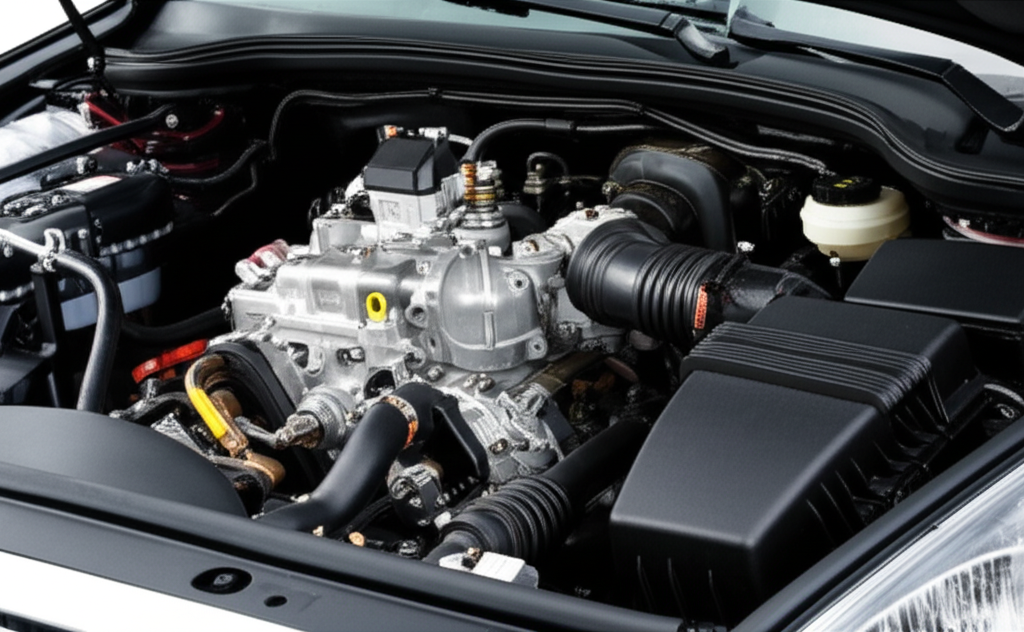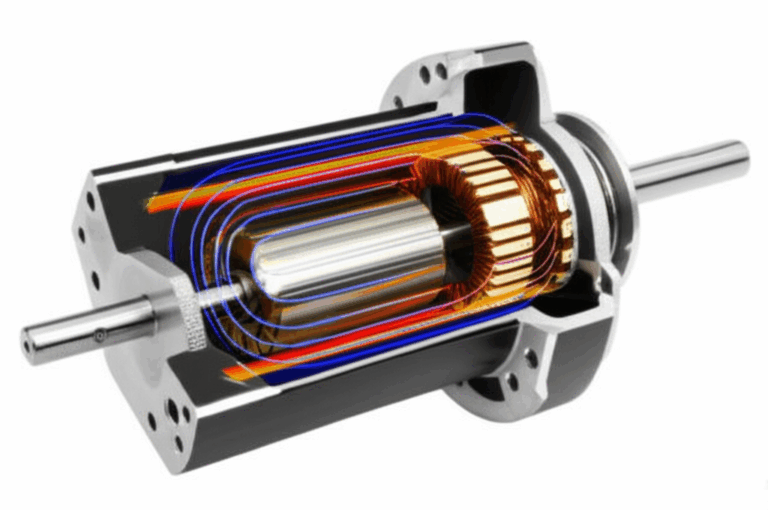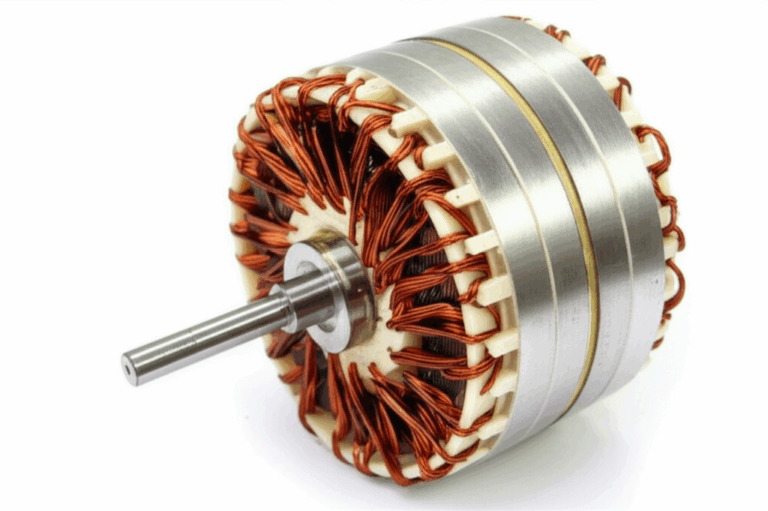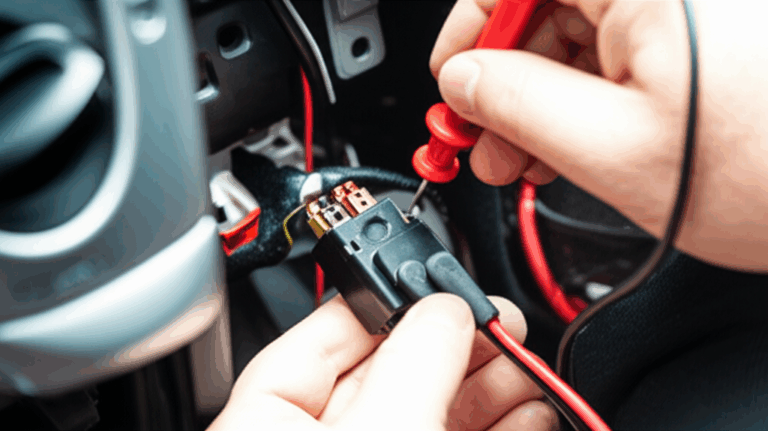
What Does the Idle Air Control (IAC) Motor Do? Your Guide to Engine Idle Stability and Troubleshooting
Your car idles smooth for a reason. A small part called the Idle Air Control motor makes that happen. In this guide I show you what it does. I explain how it works. I help you spot symptoms, diagnose issues, and fix them fast.
- You learn simple steps you can use today.
- You avoid stalling, rough idle, and wasted time.
- You get clear answers in plain English.
Table of Contents
- What is an Idle Air Control (IAC) motor?
- Why does idle speed matter?
- How does the IAC motor work under the hood?
- Where do I find the IAC motor on my car?
- What are the symptoms of a bad IAC motor?
- What causes IAC motor failure?
- How do I diagnose IAC problems at home?
- Should I clean or replace the IAC motor?
- How do I reset the ECU and relearn idle?
- What else can cause idle trouble besides the IAC?
- How much does it cost to fix an IAC?
- Brand notes and common patterns
- A short guide for engineers and builders
- FAQ
- References
- Key takeaways
What is an Idle Air Control (IAC) motor?
Let me start with a simple picture. When your foot is off the pedal the throttle plate sits nearly closed. The engine still needs air to run. The Idle Air Control motor also called the Idle Air Control Valve or IACV, lets a small, controlled stream of air slip past the throttle plate. That tiny stream keeps the engine turning at the right RPM at idle.
Think of it as an air doorman. It opens a little for more air when needed. It closes a little when the engine must slow down. The Engine Control Unit or ECU tells it what to do. The IAC helps with idle stabilization and engine speed control.
You may also hear folks call it an air bypass valve. That name fits because it controls a bypass air passage that sneaks around the throttle body plate. Different cars use different designs. Some use a stepper motor IAC. Some use a rotary solenoid IAC.
Why does idle speed matter?
Idle speed matters a lot. A good idle prevents stalling when you stop at a light. It stops rough idle and engine vibration at idle. It helps with cold start issues and warm start problems. It keeps the alternator charging. It gives the AC compressor power. It helps the power steering pump when you turn the wheel at a stop.
Your car sees different loads at idle. The AC kicks on. The alternator works harder with headlights on. The power steering adds drag at parking speeds. The IAC motor sees that load through the ECU and changes air flow to compensate. That is engine load compensation. You feel a smooth idle and no surge.
In short the IAC helps your car breathe right at rest. It holds the idle speed specification set by the vehicle manufacturer. That keeps the fuel injection system stable and the emissions control system happy.
How does the IAC motor work under the hood?
Here is the simple flow. The ECU reads sensors like the Engine Coolant Temperature (ECT) sensor, the Mass Air Flow (MAF) sensor or the Manifold Absolute Pressure (MAP) sensor, the Throttle Position Sensor (TPS), and the crankshaft position sensor (CKP). It also uses the camshaft position sensor (CMP), vehicle speed, and RPM data.
Then the ECU sends signals to the IAC motor. On a stepper motor IAC the ECU tells it how many steps to move. On a rotary solenoid IAC the ECU changes the duty cycle. It can use Hertz and pulse width to set the opening. More opening means more air. More air means higher RPM. Less air means lower RPM.
Many cars run open loop idle control right after a cold start. Then they switch to closed loop idle control as the O2 sensor warms up. The oxygen sensor or O2 sensor feeds back data. The ECU trims fuel. The IAC trims air. Together they keep idle steady.
Where do I find the IAC motor on my car?
Most IAC motors sit on or near the throttle body. Look at the intake manifold area. The IAC often bolts to the side or bottom of the throttle body with two screws. You will see an electrical connector and sometimes a small gasket or O-ring where it meets the housing.
On some cars the IAC sits on the intake manifold itself. On others it hides under a cover. Your engine bay layout will vary. A scan tool or a service manual can help you spot the IAC valve location on your model.
What are the symptoms of a bad IAC motor?
Here are the red flags I see most:
- Rough idle or idle speed fluctuations
- Engine stalling when stopped or when slowing down
- High idle RPM or low idle RPM
- Hesitation at idle or engine surge at idle
- Check engine light with Diagnostic Trouble Codes (DTCs) like P0505
- Poor cold starts or warm start problems
- Engine vibration at idle and a shaky feel
- Car won’t idle unless you press the gas
A bad IAC can also hurt comfort. The AC may blow warm at a stop because the idle drops. The alternator load may pull RPM down. You may see the dash lights dim as RPM dips.
Can a bad IAC cause misfire? It can trigger a misfire-like shake at idle. It does not damage spark plugs or ignition coils by itself. Yet a rough idle can mask a real misfire. You may also see reduced fuel economy but that is often indirect. The ECU adds fuel during unstable idle to keep the engine alive.
What causes IAC motor failure?
I see four main causes:
- Carbon buildup and contamination: Soot sticks to the pintle or valve seat. The bypass air passage gets dirty. The pintle sticks. This is the most common cause.
- Electrical failure: The stepper motor windings burn out. The rotary solenoid fails. The wiring harness gets damaged. The connector corrodes. The motor opens or shorts in ohms testing.
- Mechanical wear and tear: The plunger or spring wears out. The internal gears slip.
- Vacuum leaks: A vacuum leak can mimic IAC symptoms. The IAC then works hard to hide the leak. The engine idles high or hunts.
I also see PCV valve faults, a dirty throttle body, or a stuck EGR valve cause rough idle that looks like an IAC problem. We will cover that below.
How do I diagnose IAC problems at home?
You can do a lot with simple tools. Here is my basic plan.
- Visual check: Look for loose connectors, broken wires, or a torn gasket or O-ring. Check for oil in the connector. Listen for a whistle that hints at a vacuum leak.
- OBD-II scan: Use a scan tool or an OBD-II scanner. Look for codes like P0505 and other idle related DTCs. Check live RPM. Watch TPS, MAF or MAP, ECT, and O2 sensor data.
- Basic function test: With the engine idling tap the IAC lightly with a tool handle. If idle changes the pintle may be sticking. Do not use force.
- Electrical test: Use a multimeter. Check IAC motor resistance in ohms across the pins. Compare to the service manual spec. No continuity means an open circuit. Very low ohms may mean a short. On some cars you can also test signal voltage in volts and frequency in Hertz at the connector with the key on and the engine running. Use care.
- Air test: Check for vacuum leaks with carburetor cleaner or propane near joints and hoses. If RPM jumps you found a leak. Fix leaks before you blame the IAC.
If you own a scope you can check the ECU output to the IAC motor. Most folks do not need that. A shop can do a deeper test with advanced automotive diagnostics.
Helpful table: Symptoms and likely causes
| Symptom | Likely Cause | First Check |
|---|---|---|
| Rough idle | Dirty IAC or throttle body | Clean both parts |
| High idle RPM | Vacuum leak, stuck IAC open | Smoke test for leaks |
| Low idle RPM | Stuck IAC closed, weak alternator | Check IAC movement and battery charging |
| Stalls at stop | IAC stuck, TPS fault | Scan live data and tap IAC |
| Surges at idle | Air leak or bad MAF | Inspect intake hoses and MAF sensor |
| P0505 code | Idle control system fault | Check wiring and IAC resistance |
Should I clean or replace the IAC motor?
Use the PAS method to decide.
- Problem: The engine idles rough and stalls at lights. It scares you and wastes time.
- Agitate: You press the gas to keep it alive. Your car shakes. The check engine light mocks you. You feel stressed every time you stop.
- Solution: Clean the IAC if it is dirty. Replace it if it is dead. Do a proper idle relearn so the ECU can set the right air flow.
Cleaning works best when carbon buildup causes the problem. Remove the IAC. Spray with throttle body or carburetor cleaner. Clean the pintle and the seat. Clean the bypass air passage in the throttle body. Do not force the pintle. Let it dry. Install a new gasket. Clear codes. Start the engine and let it idle.
Replace the IAC if the motor fails electrical tests or if cleaning does not help. Use an OEM IAC valve for best fit. A good aftermarket IAC motor can also work if it meets spec. Follow torque specs on bolts. Plug in the connector with care.
Quick cost guide
| Repair Path | Parts Cost | Labor Cost | Notes |
|---|---|---|---|
| DIY cleaning | $10–$20 | $0 | Cleaner and a rag |
| DIY replacement (aftermarket) | $50–$150 | $0 | Check reviews |
| DIY replacement (OEM) | $100–$300+ | $0 | Often lasts longer |
| Pro replacement | $150–$500+ | Included | Varies by model |
How do I reset the ECU and relearn idle?
Many cars need an idle relearn procedure after you clean or replace the IAC. This is the learning procedure IAC step that lets the ECU find the new baseline. The steps vary by engine management system. Here is a common simple method that works on many cars:
Some cars use electronic throttle control and drive-by-wire systems. Those do not have a separate IAC motor. The ECU uses the throttle plate to adjust idle. The idle relearn procedure may differ. Follow the idle relearn procedure in your service manual. If needed a shop can use a scan tool to run a guided learning procedure and to reset adaptations. They can also perform a vehicle self-diagnosis routine.
What else can cause idle trouble besides the IAC?
The IAC takes the blame a lot. Yet many other parts affect idle. Here are common ones:
- MAF sensor faults or a dirty MAF
- MAP sensor faults on speed density systems
- TPS glitches that confuse the ECU about throttle angle
- Vacuum leaks at the intake manifold or hoses
- PCV valve stuck open
- EGR valve stuck open
- Dirty throttle body
- Weak spark plugs or failing ignition coils
- Clogged fuel injectors
- Low fuel pressure
- Alternator problems that drag idle down
- Exhaust leaks or a clogged catalytic converter
- Faulty O2 sensor feedback
- Automatic transmission load issues or a failing torque converter
- Manual transmission clutch drag
Do a full check before you buy parts. Read DTCs with OBD-II. Look at live data. Fix any obvious air leaks. Confirm the basics first.
How much does it cost to fix an IAC?
You saw the quick table above. Here are a few notes:
- Parts cost changes by brand and vehicle manufacturer. Honda, Ford, Toyota, GM, Chrysler, Nissan, Subaru, Volkswagen, BMW, Mercedes-Benz, Kia, Hyundai, and Lexus all use different units and prices.
- Aftermarket parts can save money. OEM parts offer known quality.
- A pro may charge one hour or more for diagnosis. That time is worth it if you avoid swapping the wrong part.
If money is tight start with cleaning. Cleaning is cheap and often works for symptoms of dirty IAC. If the IAC fails resistance tests you save time by replacing it.
Brand notes and common patterns
From my bench and from many repair bays I visit I see patterns.
- Ford IAC problems on some older trucks often trace to failed windings. Cleaning rarely saves them.
- Honda IAC issues in the early 2000s often respond well to a deep cleaning of the valve and the bypass passage.
- Toyota IAC symptoms tend to come with vacuum leaks or dirty throttle bodies. Cleaning plus a new gasket helps.
- GM IAC valve function often works fine yet a cracked intake hose causes a surge at idle.
- Chrysler IAC motor purpose and action are similar to others. Check wiring at the connector for corrosion on older models.
- Nissan and Subaru IAC motors sometimes need an ECU idle relearn or they hunt after a battery disconnect.
- Volkswagen and BMW engines with drive-by-wire use throttle-only idle control. No separate IAC. A throttle body adaptation fixes many idle issues.
- Mercedes-Benz and Lexus show similar trends. Clean air paths and correct learning procedures help.
These are common observations. Always follow your service data.
A short guide for engineers and builders
If you design or source motors and actuators you already know this. Stepper IAC motors and rotary solenoids live and die by magnetic circuit quality. The core stack matters. High-grade electrical steel laminations cut eddy losses. Tight motor core laminations support smooth motion at low steps. Good stator core lamination and precise rotor core lamination geometry reduce noise and improve response time. If you build actuators for automotive use choose materials and tolerances that hold up to heat, vibration, and duty cycles.
For readers who do not build parts do not worry. You will not need this level of detail to fix your car. I share it because better parts help your car idle smooth for a long time.
FAQ
What does a good IAC do day to day?
It keeps idle steady hot or cold. It catches load changes from the AC compressor, power steering load, and alternator load. It prevents stalling when you lift your foot off the accelerator. It keeps RPM near spec.
How can I test IAC motor resistance?
Unplug the connector. Set your multimeter to ohms. Probe the pins per your IAC motor pinout. Compare readings to your service manual. Open circuit means a failed winding. Shorted windings read too low.
Do drive-by-wire systems use an IAC?
Some do not. Many drive-by-wire systems or DBW use the throttle plate to control idle. The ECU commands small throttle moves. The goal is the same. The method is different.
Can a bad IAC cause poor fuel economy?
Yes but mostly in a roundabout way. If idle hunts the ECU may add extra fuel to keep the engine alive. The effect is small in many cases. Fix the root cause.
Does a bad IAC cause misfire?
A bad IAC can feel like a misfire at idle. It rarely causes a real misfire. Check spark plugs, ignition coils, and fuel injectors if you see misfire codes.
What is the P0505 code?
It is a general idle control system code. It means the idle is higher or lower than expected. It does not point only to the IAC. It flags the whole idle control system.
References
- OEM Service Manuals for specific vehicle models
- SAE J1979: E/E Diagnostic Test Modes (OBD-II)
- Chilton and Haynes repair guides
- Common automotive engineering texts on engine management systems
- Professional scan tool user guides for idle relearn and throttle adaptations
A deeper look: Sensors, signals, and specs
Here are the major entities that play a role in idle control. This section ties the system together in plain terms.
- Engine Control Unit (ECU): The brain that runs idle speed adjustment
- Throttle Body: The housing with the throttle plate and bypass air passage
- MAF Sensor or MAP Sensor: Measures air or pressure to estimate air flow control
- TPS: Tells the ECU if the throttle is closed or open
- O2 Sensor: Gives feedback for fuel trim at idle in closed loop
- ECT Sensor: Tells the ECU engine temperature to raise idle at cold start
- CKP and CMP: Provide engine speed and position for stable control
- PCV Valve and EGR Valve: Can upset idle if stuck
- Alternator, AC Compressor, Power Steering Pump: Add load that the IAC must handle
- Automatic Transmission and Manual Transmission: Both can change idle load when shifting or stopping
- Scan Tool / OBD-II Scanner and Multimeter: Tools for automotive diagnostics
- Wiring Harness, Gasket, O-ring: Small parts that often cause big issues if damaged
- Exhaust System and Catalytic Converter: Can affect idle if restricted
- Emissions Control System: Works with idle strategy to keep emissions low
I include these because idle control touches many parts. When the IAC looks bad check the whole picture.
Step-by-step: DIY IAC cleaning guide
Safety first. Work on a cool engine. Set the parking brake. Unplug the battery if your model requires it.
If the idle stays bad and the electrical tests fail replace the IAC motor. If you have an electronic throttle control with no IAC clean the throttle body and run a throttle adaptation.
Data and field patterns you can use
I keep notes from real cars. Here are patterns I trust.
- Carbon buildup causes most IAC sticking issues. Cleaning often restores normal idle.
- Electrical failure shows up as open or shorted windings in ohms. Replacement is the fix.
- Vacuum leaks cause high idle and surging. A smoke test finds them fast.
- A dirty MAF sensor can mimic IAC faults. Clean the MAF with the right cleaner.
- TPS faults confuse the ECU about idle versus part throttle. The ECU then mismanages idle air.
These patterns save time. They also help you avoid parts darts.
When to call a pro
You can do many checks at home. Yet some problems need a skilled tech.
- The idle hunts only when hot or only with AC on and no codes set
- The IAC passes tests yet the car still stalls
- The car uses drive-by-wire and needs a scan tool relearn
- You see strange data from sensors that do not match each other
A trained automotive mechanic with a scope and a pro scan tool can solve these fast. One good hour of diagnosis can beat days of guesswork.
Conclusion with PAS one more time
- Problem: Your car idles rough and stalls. The check engine light shows a P0505 code. You worry it will die at a stop.
- Agitate: You feel the shake. The wheel tugs. The AC gets warm. You fear safety risks at busy lights.
- Solution: Check for vacuum leaks. Clean the throttle body and IAC. Test the IAC with a multimeter. Replace it if needed. Do the idle relearn procedure. Confirm that the MAF, TPS, O2 sensor, and PCV valve work as they should. Use your scan tool. Follow the engine idle speed adjustment steps in the manual.
You can do this. Keep it simple. Work step by step. Your engine will idle smooth again.
Key takeaways
- The IAC motor also called the IAC valve controls bypass air at idle to keep RPM steady.
- The ECU reads ECT, MAF or MAP, TPS, O2, CKP, and CMP then sends signals to the IAC.
- Symptoms include rough idle, stalling, high or low idle RPM, surging, and a P0505 code.
- Carbon buildup is common. Clean the IAC and the throttle body before you replace parts.
- Test with an OBD-II scanner and a multimeter. Check volts, ohms, and sometimes Hertz.
- Fix vacuum leaks. A leak can mimic IAC problems.
- Drive-by-wire systems may not have a separate IAC. The throttle plate manages idle.
- After repair run the idle relearn procedure so the ECU can stabilize idle.
- Use OEM parts when you can. Aftermarket can work if the part meets spec.
- Smooth idle protects comfort, power steering, AC, and charging at a stop.







